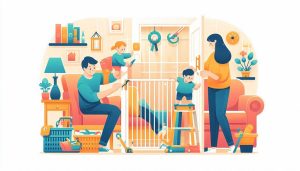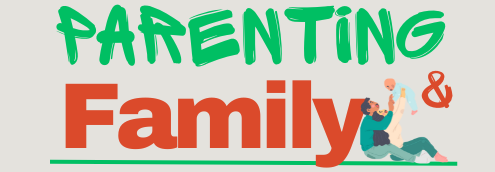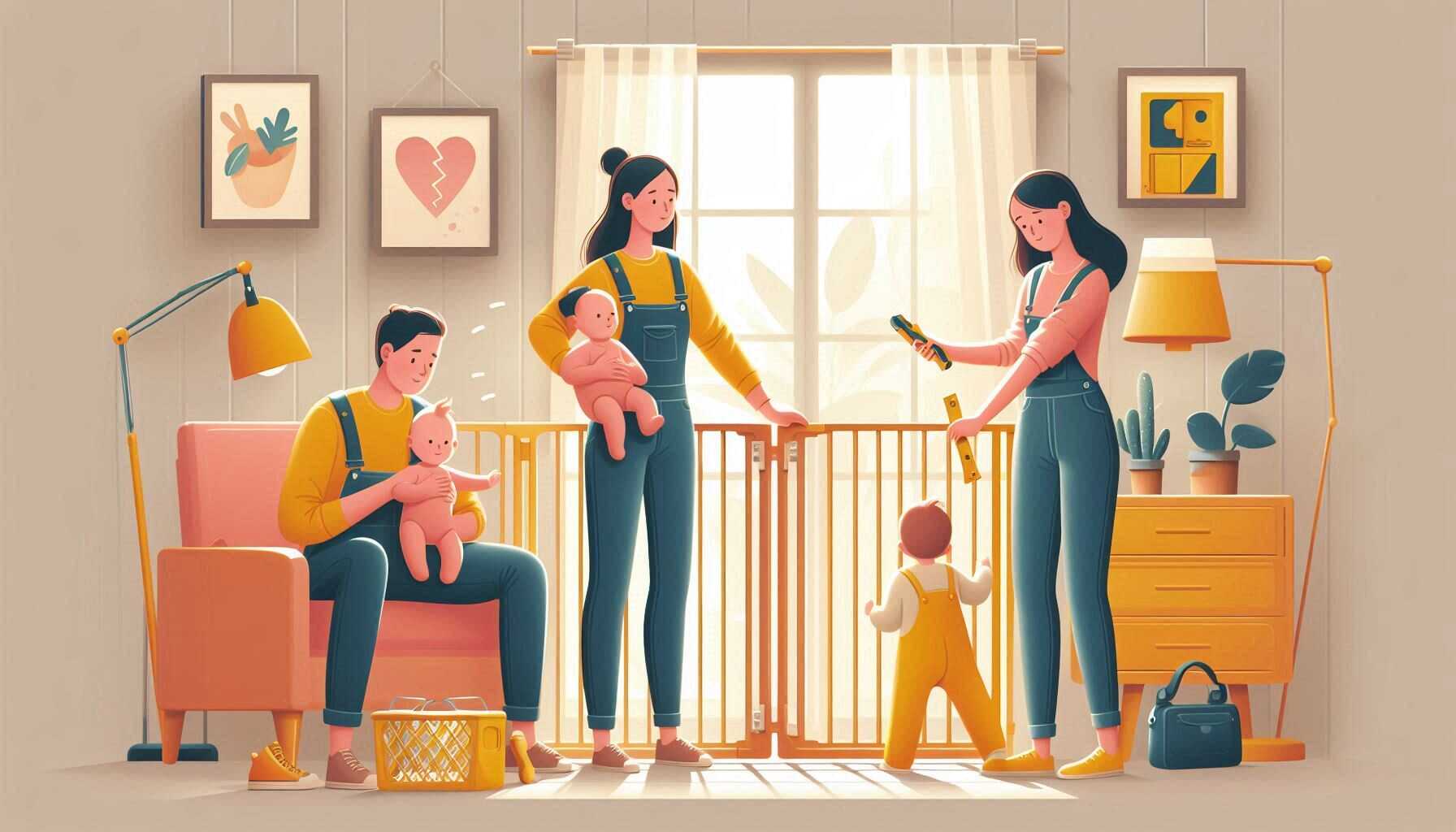[ad_1]
As parents, we want nothing more than to keep our little ones safe. But let’s face it – parenting comes with a whirlwind of challenges, and maintaining a safe home for your children can sometimes feel overwhelming. Do you often find yourself worrying about hidden dangers lurking around your house? Or perhaps you’ve questioned whether you’ve done enough to childproof your spaces? You’re not alone!
In this article, we’ll walk you through an essential childcare safety checklist that you can implement at home. Not only will this guide help you identify potential hazards, but it will also provide actionable strategies to keep your children secure. Whether you’re a new parent or a seasoned pro, we’ll cover everything you need to know to create a safe environment for your little ones. So let’s dive in and make safety a priority in your home!
Understanding the Basics of Childcare Safety
Childcare safety, at its core, is about protecting your children from physical and environmental hazards within your home. This includes understanding potential dangers and knowing how to mitigate them effectively.
Why is this so important? Well, according to the National Safety Council, unintentional injuries are the leading cause of death for children in the U.S. So, understanding the basics of childcare safety isn’t merely helpful; it’s essential. It encompasses a wide array of considerations, from proper supervision to securing dangerous items, and it requires constant attention as your child grows and explores.
By creating a safe home environment, you not only help prevent accidents but also foster a sense of security and trust within your child. This creates a solid foundation for their emotional and mental well-being as they grow.
Key Benefits of Childcare Safety for Parents and Children
-
- Reduced Risk of Injuries: Implementing a comprehensive safety checklist lowers the chances of accidents, thereby protecting your little ones from harm. After all, every parent wants to feel assured that their child is as safe as possible.
-
- Peace of Mind: Knowing that you’ve taken steps to make your home safer allows you to relax and enjoy your time with your children without the constant worry of possible accidents.
-
- Promotes Independence: A safe environment encourages children to explore and learn about their surroundings, promoting curiosity and autonomy.
-
- Long-term Safety Habits: Teaching children about safety from an early age instills lifelong habits, making them more mindful of potential dangers as they grow older.
-
- Increased Family Cohesion: When you work together as a family to create a safe home, it fosters communication and teamwork, thereby strengthening your family bonds.
Common Challenges with Childcare Safety and How to Overcome Them

Even with a solid safety plan, many parents face common challenges when it comes to creating a childcare-safe home:
-
- Underestimating Hazards: Sometimes, parents might overlook common household items that can be dangerous. Regularly reassessing your environment can help combat this. Consider keeping a checklist handy to review potential hazards regularly.
-
- Balancing Safety and Freedom: It can be tough to find the sweet spot between childproofing and allowing your child freedom. An effective way to navigate this is by setting up “safe zones.” Designate areas where your child can play freely while still being boxed in and safe from larger hazards.
-
- Overwhelm with Information: The sheer amount of advice available can make it hard to know where to start. Focus on one area of your home at a time to keep the process manageable. You might begin with the kitchen, then gradually make your way through the rest of the house.
-
- Inconsistent Safety Practices: Often, safety measures aren’t prioritized consistently. Consider forming a family routine that includes regular safety checks and discussions about safety practices to keep everyone engaged.
Expert-Recommended Childcare Safety Strategies
-
- Create a Safety Checklist: Use this checklist as a starting point:
-
- Secure heavy furniture to walls.
-
- Use baby gates at stairways.
-
- Cover electrical outlets with safety plugs.
-
- Store cleaning supplies and medications out of reach.
-
- Create a Safety Checklist: Use this checklist as a starting point:
-
- Regularly Reassess the Environment: Children grow and develop quickly, which means their needs will change. Schedule a monthly safety inspection of your home to address new risks.
-
- Lead by Example: Demonstrate safe behaviors, such as buckling up in the car or wearing a helmet when riding a bike. Children learn a lot by watching their parents.
-
- Teach About Risks: From a young age, introduce concepts regarding safety. Simple rules like “don’t touch” or “stay back” can go a long way. Use real-world examples they can relate to, like discussing the dangers of hot appliances.
-
- Invest in Safety Gadgets: Items like corner guards for sharp furniture edges, cabinet locks, and door alarms can enhance safety without putting a damper on fun.
-
- Get Kids Involved: Depending on their age, let your children help with safety checks. This not only empowers them but also teaches them about the importance of being safe.
Essential Childcare Safety Tips for Different Age Groups
-
- Infants (0-12 months):
-
- Keep small items that pose choking hazards out of reach.
-
- Always supervise floor play.
-
- Use a crib with a firm mattress and no loose bedding.
-
- Infants (0-12 months):
-
- Toddlers (1-3 years):
-
- Secure cords from blinds and curtains.
-
- Keep heavy items such as books or toys stored at low levels.
-
- Use outlet covers to prevent accidental shocks.
-
- Toddlers (1-3 years):
-
- Preschool (3-5 years):
-
- Begin discussing simple rules about strangers and safety.
-
- Encourage them to recognize emergency numbers and what to do in emergencies.
-
- Preschool (3-5 years):
-
- School-Age (6-12 years):
-
- Teach bicycle safety, including wearing helmets.
-
- Help them understand how to spot unsafe situations or items.
-
- Encourage independence while setting boundaries.
-
- School-Age (6-12 years):
Making Childcare Safety Work for Your Family
Every family is unique, and so should be your childcare safety strategy. Begin by assessing your home’s layout, lifestyle, and any specific needs your children may have.
-
- Personalized Safety Plans: For families with pets, you may also want to incorporate strategies to manage interactions between pets and kids.
-
- Family Meetings: Regular discussions about safety can help identify potential issues and brainstorm solutions as a family unit.
-
- Involve Extended Family: If your children spend time with grandparents or caregivers, make sure everyone is on the same page regarding safety protocols.
When to Seek Professional Help with Childcare Safety
It’s important to acknowledge when you need additional support. If you find any of these warning signs, it may be time to seek professional help:
-
- Your child has frequent accidents or injuries, indicating potential environmental hazards.
-
- You notice persistent behavioral issues related to anxiety and fear around safety.
-
- You’re overwhelmed by the amount of information available and need tailored guidance.
For assistance, consider consulting local health and safety experts, pediatricians, or childproofing services.
Final Thoughts on Childcare Safety
Creating a safe environment for your children is one of the most loving things you can do as a parent. By following this essential childcare safety checklist, you are taking proactive steps to protect your little ones while allowing them the freedom to explore and grow.
Remember, safety is an evolving journey, not a destination. Regularly review and adjust your safety practices to fit your family’s needs. So roll up your sleeves and start making your home the safest place it can be – your peace of mind, and your children’s happiness, are worth every bit of effort!
Now that you’re equipped with this essential checklist, download a copy and get started today. Your little ones deserve a safe haven, and you’ve got this!
[ad_2]


